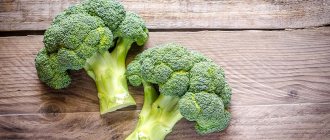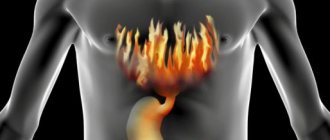Today, bran has become a part of the human diet, although its benefits for the body have been known since ancient times. This healthy food product in its pure form can now be bought in almost every pharmacy, and bran products are sold in many stores. What is bran, how are they useful for children and how to use them?
Bran is a secondary product obtained during the production of flour and cereals. They consist of crushed shells and seed embryos. They contain all the substances most necessary for the body, while flour, especially the highest grade, is an absolutely useless product. Therefore, if you use flour products, then only from wholemeal flour - there will be more benefits.
Composition of bran
Bran contains a large number of substances beneficial to the body.
Bran contains many useful substances. So, in the grain shell there are:
- B vitamins (B1, B2);
- cellulose.
The endosperm layer located under the shell contains:
- vegetable proteins (proteins);
- carbohydrates: monosaccharides, disaccharides, polysaccharide beta-glucan and starch;
- fiber.
The grain germ is the most valuable in composition:
- protein;
- fats and polyunsaturated fatty acids omega-3 and omega-6;
- vitamin E;
- vitamin PP;
- carotene (provitamin A);
- macro- and microelements (selenium, chromium, magnesium, zinc, potassium, copper, iron, phosphorus, sodium, calcium, iodine).
But the most important component of bran is dietary fiber, which includes fiber, cellulose, and pectin. All of them are not digested by our intestines, but are excellent nutrition for its microflora, which is primarily responsible for immunity.
How to choose the right bran
Today there is a fairly wide range of bran on sale. All of them are useful for the body, but some are more valuable than others. Which bran is better to choose for constipation to speed up stool recovery?
Wheat, oat and rye dietary fibers are considered the most effective in dietetics. They have the highest fiber content, but a distinctive degree of hardness, which is good for treating different types of constipation.
What to look for when choosing bran:
- the product must be fresh, it is better to buy husks of the current year of manufacture;
- purchase bran in a closed package, checking its integrity (it is more likely that the product has not been affected by moisture and other third-party substances);
- if constipation is caused by poor intestinal permeability, then preference should be given to oat and wheat bran, since they are small and differ in their solubility.
As for rye bran, it has coarser fibers and therefore acts more harshly. They are recommended for use for constipation caused by poor diet and a sedentary lifestyle. Introducing them into the diet is contraindicated in the case of chronic and acute diseases of the gastrointestinal tract.
We recommend that you read the article “Vegetables for constipation.”
What types of bran are there?
Bran can be of different origins:
- Barley and oatmeal contain a large amount of soluble fiber and reduce cholesterol levels;
- corn and wheat are rich in insoluble fiber and reduce the risk of colon cancer;
- Rice bran is the most concentrated type, it contains a lot of soluble fiber and is good for lowering cholesterol levels;
- rye;
- buckwheat
Bran can be coarse or finely ground. They are also produced with additives in the form of vegetables, fruits or medicinal plants (for example, milk thistle).
Children are usually given wheat bran.
The benefits of bran for children
Bran has a beneficial effect primarily on the organs of the digestive tract, and through them on the entire body. They contribute to:
- gentle normalization of the gastrointestinal tract, which improves motility of the entire intestine, especially with constipation in children;
- removing harmful substances from the body - toxins, allergens;
- reducing excess weight (relevant for obesity in adolescents), and without much physical activity, since they suppress appetite and cause a feeling of rapid satiety;
- Having a choleretic effect, bran is useful for some diseases of the pancreas, liver and gallbladder, and is also a preventive measure for pancreatitis and cholecystitis;
- regulation of metabolic processes in the body;
- strengthening the immune system;
- active fight against dysbiosis, since bran contains B vitamins and is a good environment for the proliferation of beneficial intestinal microflora;
- Wheat bran in the form of an infusion helps with pneumonia and bronchitis.
Features and types
Which bran is the best? It is important to consider the purpose of including bran in the diet. For initial use, a product with a milder effect is recommended. With regular use or for cleansing the intestines, you can include rye or corn bran in your diet.
Bran is a waste product when grinding grain crops. For a long time, bran was considered useless, but today it is widely used in therapeutic dietetics.
The clinical value of the product lies in its high fiber content - a coarse fiber that is difficult to digest or not digested at all, which allows you to cleanse the intestinal mucous membranes like a brush. In addition to cleansing and eliminating constipation, bran has the following valuable qualities:
- normalization of the functioning of the gastrointestinal tract;
- reduction of excess body weight;
- increased intestinal motility;
- elimination of symptoms of intoxication;
- saturating the body with vitamins.
Important! Fiber is necessary for normal intestinal function, restoration of stable and regular bowel movements, and prevention of the development of constipation and fecal stones.
Varieties of bran
The diversity of the product is determined not only by its composition, but also by its shape and manufacturing technology.
The range of bran is quite diverse, so you can find all kinds of bran on sale. The main difference between the types is the concentration of beneficial vitamins and the volume of fiber. The following main types of product are distinguished:
- Wheat. The product is soft and has high concentrations of vitamins and minerals. Ideal for preparing the body for the introduction of coarse fiber into the diet. Suitable for eliminating constipation in young children due to its mild effect.
- Rye. Bran is distinguished by its fiber content of a denser structure. Rye husks have an aggressive effect on the gastric mucosa, which can lead to injury to the walls if consumed excessively.
- Oatmeal. They have soluble fiber, are well absorbed by the body, and are suitable for reducing excess body weight. Oat bran perfectly removes fats, cholesterol compounds, and eliminates the symptoms of intestinal obstruction.
- Corn. The product is enriched with healthy fats, which are so insufficient for the body with a normal diet. Regular use of the corn product strengthens the cardiovascular system, reduces excess weight, and reduces the risk of cancer and gallstone disease. Taking it not only eliminates constipation, but also restores the intestinal microflora.
- Linen. The main benefit of flax bran is the huge concentration of Omega-3 fats and fatty acids. In addition, flax bran is gluten-free and therefore suitable for people with celiac disease (wheat protein intolerance).
Article on the topic: Instructions for use of Espumisan emulsion, indications, contraindications analogues
Flax and corn bran are considered the healthiest products due to their high vitamin content. You can drink a prepared decoction of these products, prepare a paste, or eat them soaked. Regardless of the type, all bran has coarse fiber, which relieves constipation, removes waste, toxins and other compounds.
Note! It is important that the products are fresh, well stored, and not rancid. Bran should be stored in a dry place. Moisture penetration reduces the effectiveness of the product and affects its taste.
Contraindications to the use of bran
Despite the obvious benefits of bran, not all children can use it and not always. Unfortunately, they have a number of contraindications:
- peptic ulcer of the stomach and duodenum during an exacerbation;
- acute colitis;
- adhesive process in the abdominal cavity;
- allergy to gliadin, a protein found in all cereal plants.
It is recommended to use bran with caution in the following conditions and only during remission:
- gastritis and gastroduodenitis;
- hepatitis;
- cholecystitis;
- pancreatitis.
All these restrictions are due to the fact that bran increases intestinal motility, and this can cause undesirable consequences, such as abdominal pain and complications of the underlying disease.
What types of constipation do bran help with?
Restoration of bowel movements depends on the cause of intestinal dysfunction. Thus, constipation has several classifications, differing in the pattern of occurrence and the main mechanism of occurrence.
If the pathology manifests itself against the background of any gastrointestinal disease, then treatment necessarily includes medications, diet and, if necessary, surgery. In this case, it will not be possible to stop the problematic stool with bran alone. Also, consuming dietary fiber will bring little benefit if the cause of constipation is an exacerbation of gastritis, colitis and peptic ulcers. In addition, taking coarse fiber for such diseases is contraindicated.
Wheat bran for constipation is indicated only if the cause of dysfunction is not serious disruptions in the functioning of the body. These plant fibers will help restore stool in the following cases:
- poor nutrition;
- lazy bowel;
- mild malfunctions of the pancreas and gallbladder;
- being overweight, etc.
But, despite all the benefits of bran, they should be taken correctly. If consumed in excess of the norm, they, on the contrary, can cause fecal stagnation or aggravate existing intestinal problems.
We recommend that you read the article “Products for constipation during pregnancy.”
When to give bran to children?
Indications that a child needs to start giving bran include the following situations:
- poor appetite;
- low hemoglobin level (bran helps in the process of hematopoiesis);
- intestinal disorders of various etiologies, including poisoning and persistent constipation;
- frequent colds (bran, having a beneficial effect on intestinal function, thereby strengthens the child’s immunity);
- allergic reactions;
- obesity in adolescents.
Separately, it should be noted that thanks to the minerals contained in bran, the child’s skeletal and muscular system is gradually strengthened.
But excessive or constant use of this product can lead to upset of the child’s digestive system, its irritation and weakness and, as a result, to a deterioration in the absorption of other beneficial substances. Therefore, it is better to give bran to children in courses, in consultation with a pediatrician.
Babies can begin to be given bran from the age of 10 months in the form of a decoction. And after a year they are allowed to be added to children's dishes. Pediatricians recommend including wheat varieties in the diet.
Effective recipes for treating constipation
Oat bran is gentle. They can be used daily. This will not only help you cope with constipation, but will also generally improve intestinal function and speed up the digestion time of food.
But how to take rye bran for constipation should be considered more carefully. Their use is allowed only after the body has become accustomed to digesting dietary fiber in smaller quantities. They cope well with chronic constipation.
Grinded with a blender or coffee grinder can be added to daily dishes:
- dough;
- porridge;
- casseroles;
- salads;
- side dishes
Kefir with bran is more effective against constipation. This happens due to a combination of product properties. Kefir - as a lactic acid product, affects the functioning of the gastrointestinal tract, and bran enhances this effect. For one glass of kefir, 1 tbsp is enough. l. This drink helps not only to normalize intestinal function, but also to lose weight.
Corn bran also has an effect against constipation, but it is much more difficult to buy. The method of their preparation is the same as that of other types. Rye bran for constipation can be taken as an independent dish or supplemented with lactic acid products. Do not use more than 30 grams of this product daily. For chronic pathology, it is recommended to divide the dose into 3 approaches, before lunch, breakfast and dinner. The duration of treatment should not exceed a month or two. If discomfort or pain occurs during use, discard this product immediately.
During pregnancy you should avoid eating bran
In what form and in what quantities should bran be given to children?
Bran should be introduced into the child’s menu gradually, starting with half a teaspoon per day. Their number is increased every three to four days, and the child’s condition is monitored all this time. Regular trips to the potty signal to parents that the baby's current dose of bran is sufficient and no longer needs to be increased. Otherwise, a kind of overdose may occur, which will manifest itself in bloating and colic.
To obtain the desired effect, bran for a child should be prepared correctly.
For children under one year of age, bran is given in the form of a decoction if necessary. Daily dose – 5 g (1 teaspoon). To make a decoction for a ten-month-old baby, add half a glass of boiling water to a teaspoon of bran and cook over low heat for 10–15 minutes. After that, drain the liquid and cool, divide into 3 servings, which the baby should drink during the day. The decoction can be offered to the child in its pure form or added to soup or porridge. And the remaining bran is perfect for an adult diet.
For babies after one year, the daily dose (5-10 g - about one and a half teaspoons) is poured with a small amount of boiling water and infused for 20-30 minutes, after which the excess water is drained. Such bran is added to various children's dishes - soups, cereals, drinks, and they can either be divided into several parts or given the entire portion at once.
For children after three years of age, bran can be added to dishes in dry form. But the baby should drink as much liquid as possible.
The daily dose of bran for children over 10 years old is 15 g (3 teaspoons). It is better to divide this dose into 3 doses.
Bran is also available in tablets and briquettes. These release forms are dosed as follows:
- children 3–10 years old – 7–14 tablets. or 1/2–1 briquette per day;
- children over 10 years old – 28 tablets. or 2 briquettes per day.
Since bran is a product that has no taste, it is better for children to offer it with fruit or vegetable juice, with jelly, yogurt, kefir, or add it to soup (you can add it to liquid porridge).
Bran for constipation in children
As already mentioned, bran has the property of stimulating intestinal peristalsis, i.e., intestinal motor activity. At the same time, the volume of feces increases, the water content in them increases, the movement of digested food through the intestines accelerates, and the child’s bowel movements become more frequent.
To treat constipation, bran is given to children in gradually increasing quantities:
- for two weeks the child takes them in the usual age-appropriate dose (see above);
- in the next 2 weeks, the dose is doubled and then tripled (until the desired effect is achieved - daily regular bowel movements);
- then the dose of bran is gradually reduced, but it should still be 1.5 times higher than usual for age. The child receives bran in this amount for about another month.
In general, the course of treatment takes about 2 months and is carried out only under the supervision of a doctor.
What is the power of bran?
Bran is the outer shell of the grain that remains after white flour is produced. Such waste turned out to be extremely useful due to its high fiber content. It is enough to consume 20 g of bran every day to fully satisfy the body's needs for coarse fiber. Also, this product turned out to be very rich in vitamins, minerals and trace elements. Through regular use, a person can experience the following wonderful changes:
- Normalization of digestion.
- Cleansing the body of waste and toxins.
- Improving the condition of hair and skin.
- Reducing cholesterol and blood sugar.
If you use bran correctly, you can cleanse the intestines of all harmful substances. Fiber, once in the intestines, swells greatly under the influence of water and increases many times in size.
Due to this, it creates a feeling of fullness, so the caloric content of the diet is reduced. The person does not overeat, and body weight gradually decreases. The absence of hunger pangs allows you to maintain stable blood sugar levels, and the removal of harmful fats and carcinogens protects against an increase in bad cholesterol. Attention! Bran is useful not only as a remedy for constipation, but also as an assistant in easy weight loss without dieting.
If a person is concerned about constipation, he should consume bran with plenty of liquid. Under the influence of liquid, they swell greatly , increase the mass of feces and help them move faster. On their way, they collect all the sediment, so the process of defecation becomes soft and delicate. There is a gradual cleansing of the intestines and general improvement of the body.










